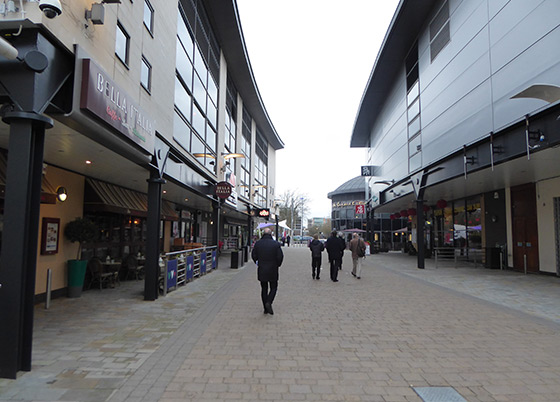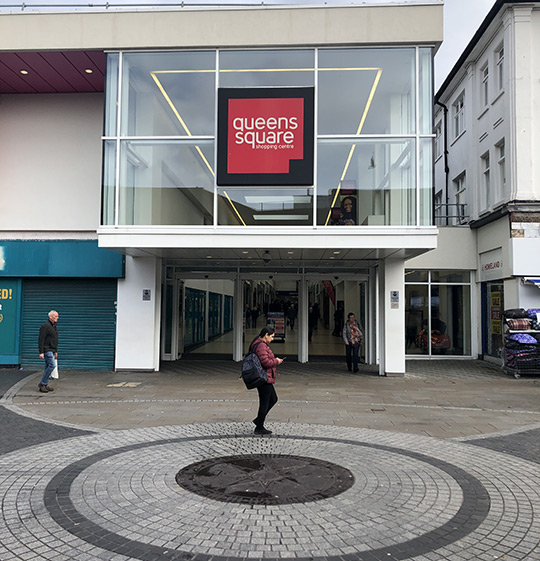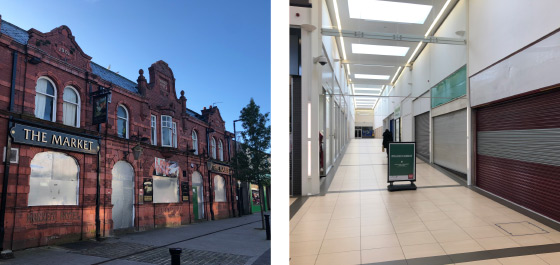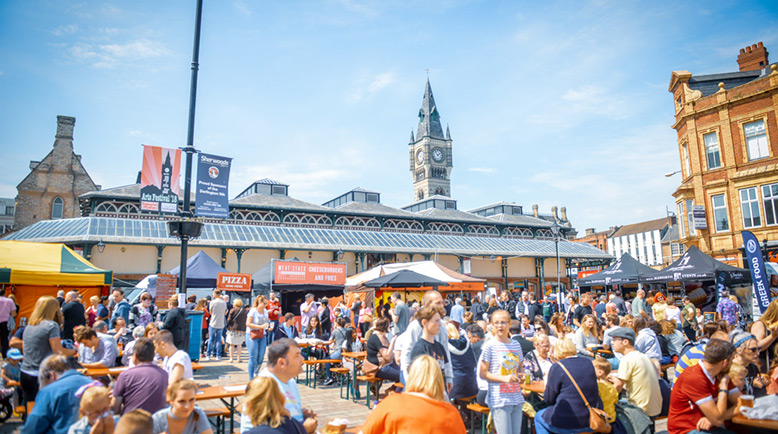
Making the Case for Investment
The Future High Street Fund
Many of the problems within retail are outside of large retail assets and in fragmented ownership, which makes funding a coordinated regeneration strategy challenging.
The Government is aware of, and keen to address the issues facing town centres, announcing a range of plans and funding pots to support the transition of towns and high streets across the country.
In the 2018 Budget the Government announced ‘Our Plan for the High Street’, which included a range of interventions to support town centres. This included an initial £675 million for the Future High Street Fund, which was subsequently topped up to a total of £1 billion and extended to include 100 towns. This was part of the £3.6 billion Towns Fund, announced in July 2019 and outlined in the subsequent ‘Town Fund Prospectus’ published in November 2019. Both funds are competitive and give towns the chance to bid for up to £25 million each.
These plans recognise that while cities across the country had reaped the rewards of economic growth, towns had not shared in such growth and were now facing a range of structural issues to their economy, undermining their performance. While the FHSF is focused on specific high streets, the Towns Fund is more wide ranging, aiming to increase economic growth across wider areas, with a focus on regeneration, improved transport, better broadband connectivity, skills and culture.

While both funds can have a transformational impact on towns, it’s important that plans are developed that are well evidenced, backed by market intelligence, focusing on the fundamental issues the town faces, and leverage backing from other sources (public and private) to deliver ambitious and transformative projects that would not have been possible without the funding.
Making the case for such investment, and demonstrating good value for public money, is tricky.

Firstly, there is need to evidence that there is a market failure behind the issues facing the town. There are multiple types of market failures which could be at play in towns; with everything from public goods, imperfect information, moral hazard, externalities, and market power. Identifying what is at play and how plans intend to overcome the issue can be complex.
Secondly, towns must demonstrate that a ‘do nothing’ scenario would result in continued decline, and the projects they are supporting would not have been brought forward without public funding. This can sometimes be easily achieved if development viability is poor, or there are high upfront infrastructure or enabling costs to growth.

Finally, towns need to demonstrate that public funding represents good value for money. This must be done in accordance with the Green Book, which is currently heavily focused on distilling all economic benefits in the form of Land Value Uplift. This can lead to a ‘Catch-22’ situation; if a town has a scheme that delivers high land value uplift then it is likely to present good value for money for public investment, however it is also likely to be a viable development scheme that the private sector could deliver without public intervention. If a scheme has low land value uplift potential, which most towns do, then it most likely is in need of public intervention, but will also likely demonstrate low value for money and so may not be supported. Many northern towns and political leaders have pressed the Government to review the Green Book for this reason, and that process is ongoing.
Residential development schemes generally deliver the highest land value uplift, and can help deliver vibrant towns with more local spending to support the retail sector.
To tackle these issues, it’s important for plans to recognise the role of the funding is to transform the role and function of the town. While residential development schemes can generally deliver the highest land value uplift, as well as increasing footfall and local spending to support the retail sector, they can also be left to the private sector to deliver. Town funding can instead be focused on creating the conditions to support residential development and diversifying the economic base of the town that would not have been possible otherwise. This can essentially transform the role of the town, which will make it a more attractive place to live, work and visit. The value that funding town centre development brings can be demonstrated by catalytic impacts on inward investment from the private sector.
Delivering Better Social Value
MHCLG have confirmed towns can consider wider land value uplift impacts of regeneration schemes, recognising that major schemes could have a regenerative impact on neighbouring properties, or form part of a wider strategy which could impact values across a whole town.
There is also a push that wider social value benefits, which currently are not accounted for in Land Value Uplift, should play a more prominent role in the evaluation process, in particular where the intervention is in deprived communities and will have a material impact on the outcomes of these communities. These social value elements certainly align with the Government’s ‘Levelling Up’ agenda, and we would encourage all places to ensure they account for these benefits fully when assessing the potential of regeneration schemes.
Having seen first hand the fantastic, ambitious, and transformative plans many towns are developing as a result of the Town Deal and Future High Street Fund process, I would say this is having a positive impact on how towns view themselves, and in understanding the role they play in the economy and community. It has also given towns a fresh perspective on the role different land uses can play in the town, moving away from a retail dominated environment, to a diverse, vibrant, high quality and active places which aim to capture future economic growth opportunities.

In Farnworth, near Bolton, we worked with the council and development partner Capital and Centric on an ambitious £25 million FHSF bid. The scheme would be transformational for the town, bringing a level of development quality not seen since the Victorian era. Importantly, it would act as a catalyst and a number of opportunity sites which could be subsequently unlocked were identified. Additionally, the social value benefits in terms of crime reduction were significant, as the current layout created opportunities for crime that regeneration would solve.
Further rounds of town-focused public funding is likely, but it’s also important that the private sector is engaged to support towns in realising their ambitions and support economic growth. Developers, businesses and investors need to understand the role they can play in unlocking opportunities in the future. The £25 million Town Deal cannot do this alone, and so ensuring private backing is secured is just as important.
The role of the Town Board in identifying and unlocking additional match funding is imperative. In Newark we observed a number of ambitious schemes being put forward that linked Town Deal funding with match funding from major regional institutions, developers and other public funding to deliver a diverse range of transformational schemes. This helped the £25 million to go further, having a deeper and longer lasting impact on the town.


